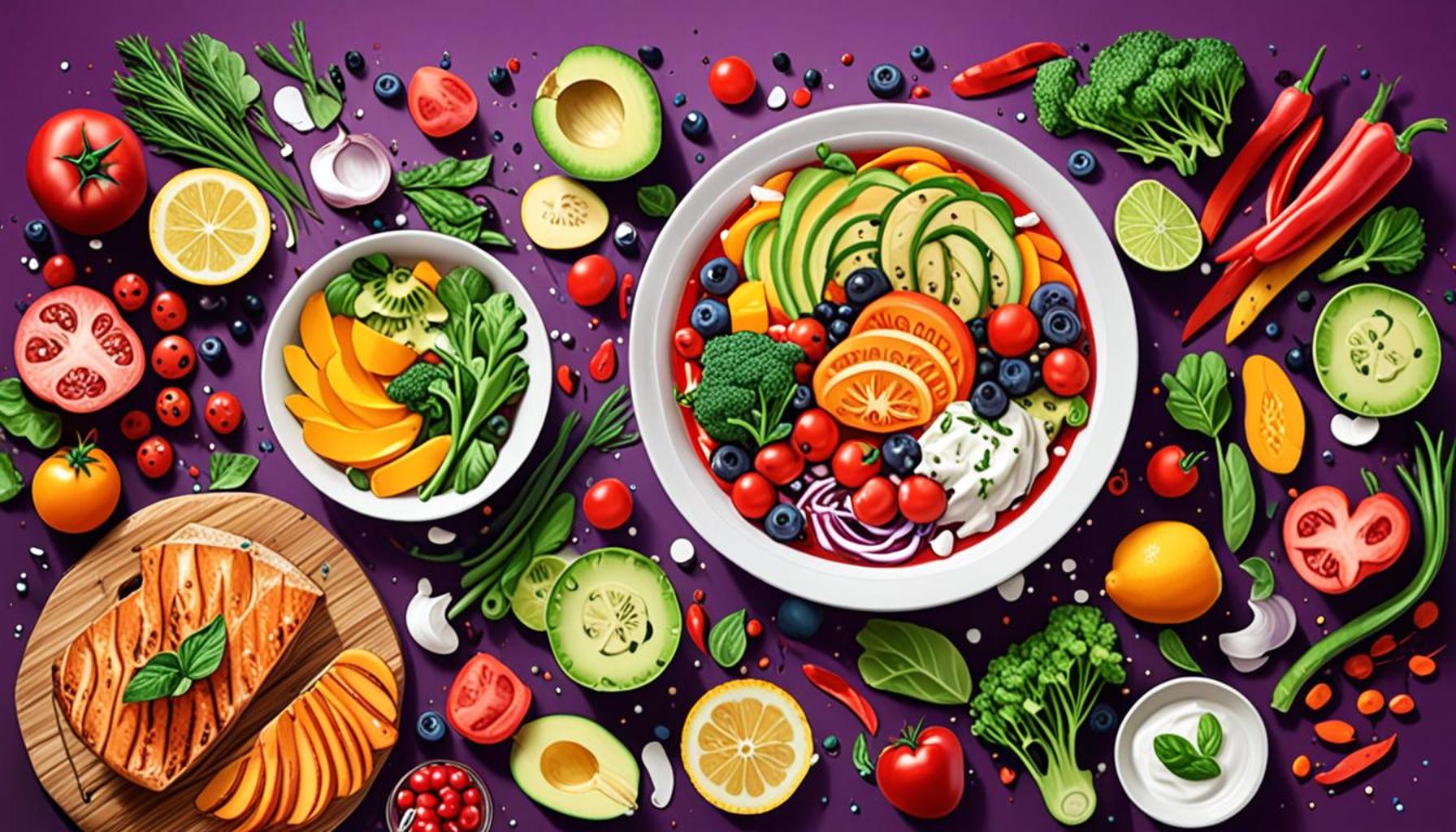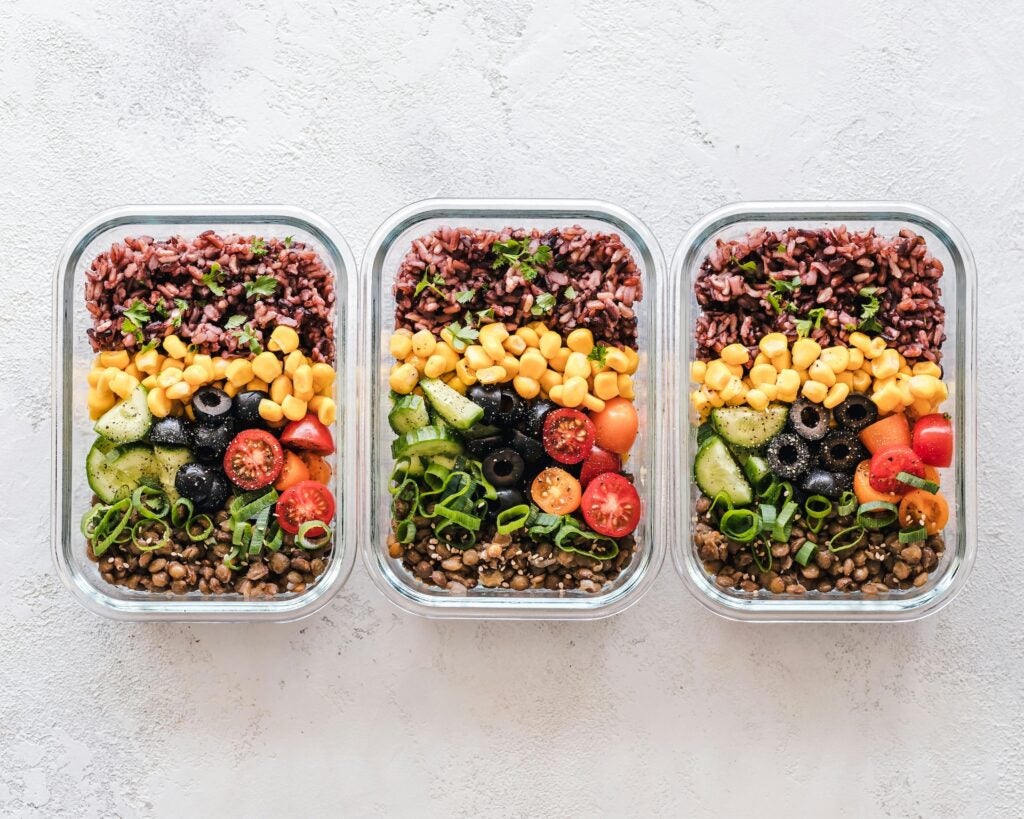Healthy Cooking: Creating Nutritious Recipes that Boost Your Physical Performance

Fueling Your Body for Optimal Performance
In today’s fast-paced world, the importance of healthy cooking cannot be overstated. The right nutrients can directly influence not only your overall health but also your physical performance. By incorporating nutritious ingredients, you can create meals that serve as powerful fuel for your body.
Why prioritize healthy cooking? Here are some key benefits:
- Improved energy levels: Nutritious foods provide long-lasting energy that can enhance endurance. This is especially crucial for those engaging in physical activities, as whole foods release energy slowly, preventing spikes and crashes in blood sugar. For instance, starting your day with a bowl of oatmeal topped with fresh berries provides a steady source of carbohydrates and antioxidants, allowing you to sustain energy levels throughout the morning.
- Enhanced recovery: A balanced diet aids in quicker recovery from workouts and injuries. Incorporating foods rich in omega-3 fatty acids, such as salmon and walnuts, can help reduce inflammation and promote muscle healing. Additionally, nutrient-dense smoothies made with spinach, banana, and protein powder can be a great post-workout option that replenishes glycogen stores and supports muscle repair.
- Better focus: Certain nutrients can sharpen concentration, leading to improved performance. For example, foods rich in omega-3s and antioxidants—like blueberries and spinach—have been linked to better cognitive function. A well-fed brain not only enhances mental clarity but also aids in the strategic aspects of athletic performance, such as decision-making during a game.
Consider incorporating the following ingredients into your recipes to capitalize on these benefits:
- Whole grains: Oats, brown rice, and quinoa are excellent energy sources. Not only do they provide complex carbohydrates, but they also offer essential fibers that aid digestion. Quinoa, often considered a “superfood,” is a complete protein, making it an outstanding choice for vegetarians and vegans.
- Lean proteins: Chicken, fish, and legumes support muscle growth and repair. Incorporating lean meats into your diet not only enhances muscle recovery but also keeps you feeling fuller, which can be particularly beneficial for managing weight while training hard.
- Fresh fruits and vegetables: Packed with vitamins and antioxidants, they help boost immunity and overall health. Colorful veggies like bell peppers and carrots not only add variety to your meals but also provide essential nutrients that can decrease the risks of chronic diseases associated with poor eating habits.
As you dive into the world of healthy cooking, you’ll discover a variety of innovative recipes designed to elevate your physical capabilities. Whether you’re an athlete or someone simply looking to enhance their fitness journey, the right food choices can make all the difference. Explore meal prep techniques, try new cooking methods like steaming or grilling, and don’t hesitate to experiment with herbs and spices to create flavorful yet wholesome dishes. Healthy cooking is more than a trend; it’s a pathway to a more energized and vibrant life.
DISCOVER MORE: Click here to dive into the world of dance as a creative hobby

Essential Ingredients for Peak Performance
Creating nutritious recipes that enhance your physical performance begins with understanding the fundamental role of ingredients. The right components can transform an ordinary meal into a powerhouse of energy and recovery. By incorporating specific foods into your diet, you can ensure your body receives the necessary fuel to perform at its best. Let’s explore some essential ingredients and how they contribute to your physical capabilities.
To maximize your performance, consider incorporating the following ten key ingredients into your healthy cooking repertoire:
- Greek Yogurt: Packed with protein and probiotics, Greek yogurt aids in muscle recovery and supports digestive health. Its creamy texture makes it a versatile ingredient for smoothies, dressings, or as a base for healthy desserts.
- Leafy Greens: Spinach, kale, and Swiss chard are rich in essential vitamins and minerals, including iron and folate. These nutrients help boost blood flow and oxygen transport, critical components for enhancing both endurance and strength during physical activities.
- Sweet Potatoes: A complex carb powerhouse, sweet potatoes provide sustained energy levels and are a great source of beta-carotene, which can improve your immune system. They can be roasted, mashed, or eaten in salads for a nutritious boost.
- Nuts and Seeds: Almonds, chia seeds, and flaxseeds are packed with healthy fats, protein, and fiber. They are not only energizing but also contribute to satiety, helping you feel full longer—perfect for those intensive training sessions.
- Legumes: Beans and lentils are excellent sources of plant-based protein and fiber. They balance blood sugar levels and keep energy steady, making them perfect additions to soups, stews, or salads.
- Chicken Breast: As a lean protein source, chicken breast is essential for muscle repair and growth. Grilled, baked, or stir-fried, it can take on many flavors to fit various cuisines.
- Quinoa: This grain is not only a complete protein but also gluten-free! Its nutty flavor and chewy texture make it an excellent base for salads or bowls, taking healthy cooking to the next level.
- Avocado: Rich in healthy monounsaturated fats, avocados support heart health and provide a creamy texture to dishes. They can be used in salads, spread on toast, or blended into smoothies.
- Fresh Herbs and Spices: Garlic, turmeric, and ginger not only enhance the flavor of your meals but also offer powerful health benefits, such as anti-inflammatory properties. Incorporating them into recipes can amplify their nutritional impact.
- Berry Varieties: Blueberries, strawberries, and raspberries are loaded with antioxidants that combat oxidative stress from workouts. Adding these colorful fruits to your meals or snacks can aid in recovery and restore energy levels efficiently.
By thoughtfully combining these ingredients into your meals, you can create diverse, mouth-watering recipes that not only satisfy your taste buds but also contribute to your overall performance and well-being. Healthy cooking doesn’t have to be boring or repetitive; it’s an opportunity to explore new flavors, textures, and culinary techniques that elevate your nutrition.
| Category 1 | Category 2 |
|---|---|
| Nutritional Value | Recipes packed with vitamins, minerals, and antioxidants. |
| Improved Energy Levels | Nutritious meals provide sustained energy and enhance athletic performance. |
| Weight Management | Healthy cooking encourages balanced meals, contributing to healthier weight control. |
| Enhanced Recovery | Recipes rich in protein and healthy fats aid in post-exercise recovery. |
Engaging in healthy cooking can significantly elevate your fitness game. Nutritional value is paramount; recipes that are rich in essential vitamins, minerals, and antioxidants are critical for overall health. These ingredients optimize your body’s function, empowering you to reach new heights in your performance. Interestingly, adopting a diet that prioritizes health does not just improve athletic capabilities; it can also play a vital role in weight management. Properly balanced, nutritious meals prevent overeating while keeping you energized.Moreover, recovery is a crucial aspect of not just training, but also in daily life. By crafting meals that are loaded with protein and healthy fats, you promote faster recovery times and muscle repair after strenuous activity. Each recipe crafted can serve as a powerful tool that feeds, fuels, and revitalizes your body, making you more resilient in the long run. With the right approach, you can transform your cooking habits into a significant ally in your journey toward enhanced physical performance.
DIVE DEEPER: Click here to discover the art of jewelry making as a creative exercise
Crafting Balanced Meals for Optimal Energy
To truly harness the power of nutritious recipes in boosting physical performance, the approach to meal composition is essential. It’s more than just selecting individual ingredients; it’s about crafting balanced meals that synergize to provide the energy, strength, and recovery needed for an active lifestyle. Achieving this balance involves understanding macronutrients and their roles, as well as the importance of meal timing.
When building your plate, aim to include a mix of carbohydrates, proteins, and fats—the three macronutrients that our bodies need for energy and cellular repair:
- Carbohydrates: These are your body’s primary source of energy. Choose whole grains like brown rice, barley, and oats for their fiber content, which aids digestion and gives a steady release of energy. Consider meals like quinoa bowls topped with roasted vegetables and chickpeas for a nutrient-dense option.
- Proteins: Essential for muscle repair, protein support can be found in diverse sources ranging from animal products like fish, turkey, and eggs to plant-based options such as lentils, tempeh, and chickpeas. A well-prepared black bean burger or a grilled salmon fillet can satisfy protein needs while delivering other vital nutrients.
- Fats: Don’t shy away from healthy fats, which are crucial for hormone production and overall health. Incorporate sources like olive oil, nuts, and fatty fish such as salmon or mackerel. A drizzle of olive oil on roasted veggies not only enhances flavor but also provides essential fatty acids.
Meal planning becomes an art when you think about the rhythm of your day. For athletes or individuals with active lifestyles, consider timing your meals strategically. Consuming a meal rich in carbohydrates and protein about 30-60 minutes post-exercise can optimize recovery. Think of smoothies blended with banana and almond butter or a protein-packed Greek yogurt parfait with berries to replenish those energy stores effectively.
Exploring Flavorful Cooking Techniques
The way you prepare food can significantly influence its nutritional value and taste. Healthy cooking techniques like steaming, grilling, or sautéing can help preserve nutrients and enhance flavors without adding excessive fat or sugar. Here are some insights:
- Steaming: Retains nutrients that can be lost through boiling. Steamed vegetables retain their vibrant colors and flavors, making them a delightful addition to any dish. Try steaming broccoli and tossing it with garlic and lemon for a light side.
- Grilling: Not only adds a smoky flavor, but it also allows excess fat to drip away. Grill lean chicken or fish and pair it with a vibrant salsa made from tomatoes, onions, and avocado to boost both flavor and nutrition.
- Sautéing: Use small amounts of healthy oils to cook vegetables quickly, preserving their crunch and nutrients. A quick sauté of bell peppers and onions can become a scrumptious addition to any protein dish.
Healthy cooking techniques not only make meals more enjoyable but also keep nutrient losses at bay. The culinary world is filled with possibilities—explore diverse cuisines that celebrate an array of spices and herbs to jolt your taste buds. Incorporating different cultural influences can lead to exciting recipes that maintain nutritional integrity while enchanting your palate.
Embrace these cooking methods and ingredients; your journey toward healthy cooking will reveal a landscape of flavors, textures, and health benefits that fuel your body and spirit. Remember, every meal is an opportunity to enhance your physical performance, offering countless ways to optimize health and satisfaction.
DISCOVER MORE: Click here to dive into the world of dance as a creative hobby
Final Thoughts on Healthy Cooking for Enhanced Performance
In the journey towards optimizing physical performance, healthy cooking plays an invaluable role. As we have explored, understanding the balance of macronutrients—carbohydrates, proteins, and fats—is fundamental in creating nutritious recipes that not only nourish but also enhance our energy levels and recovery times. By choosing wholesome ingredients and employing effective cooking techniques such as steaming, grilling, and sautéing, you can preserve essential nutrients while enjoying delicious flavors.
The integration of these principles into daily meal planning transforms food from mere sustenance to a pivotal component of performance enhancement. Timing your meals strategically, especially around workouts, can serve as a powerful tool in maximizing the benefits of your culinary efforts. Consider quick and energizing meals that incorporate both macronutrient balance and time-efficient preparation for those busy days.
Moreover, embracing a diverse array of culinary traditions not only enriches your diet but also keeps meals exciting and flavorful. Experimenting with different spices, herbs, and cooking methods can introduce new dimensions to your plates, turning healthy eating into a delightful adventure.
Ultimately, the path to better physical performance is paved with the choices we make in the kitchen. Each meal offers an opportunity to support your body’s needs and elevate your well-being, leading to improved energy, stamina, and overall health. Start your journey into healthy cooking today and discover how nourishing recipes can empower both your body and your spirit, leading to a more active and fulfilling life.


